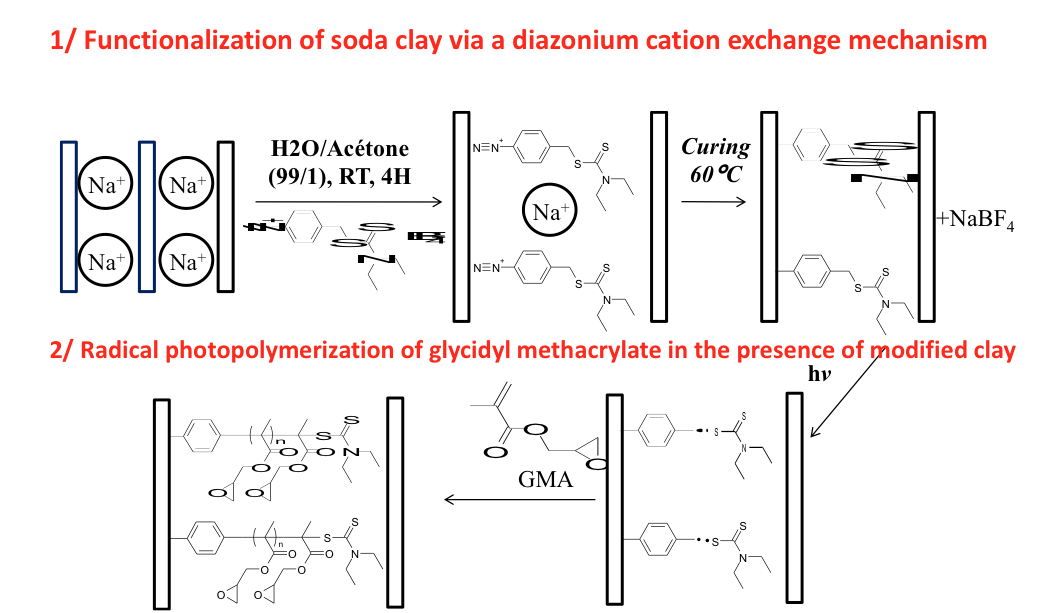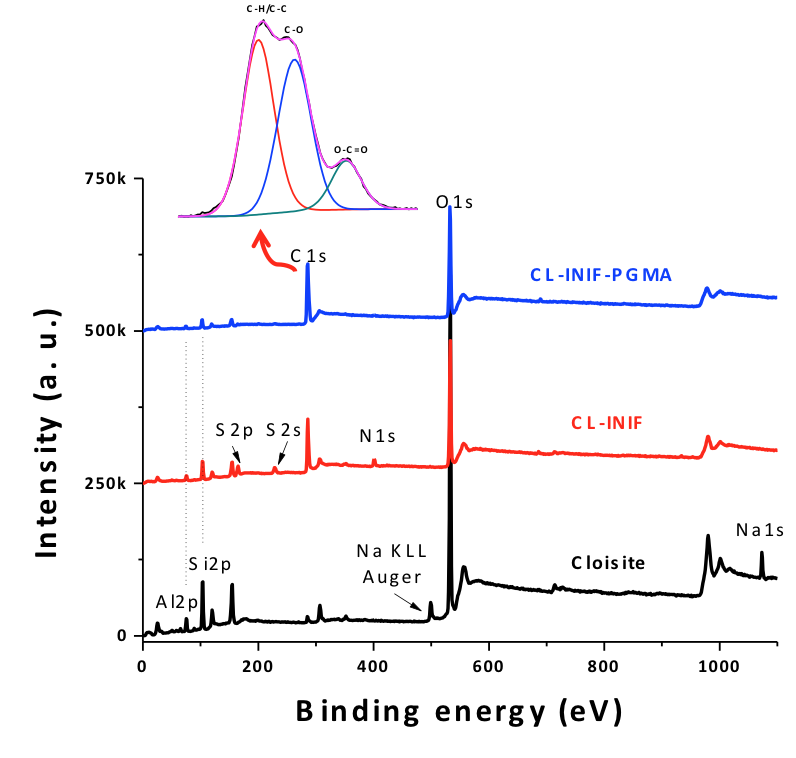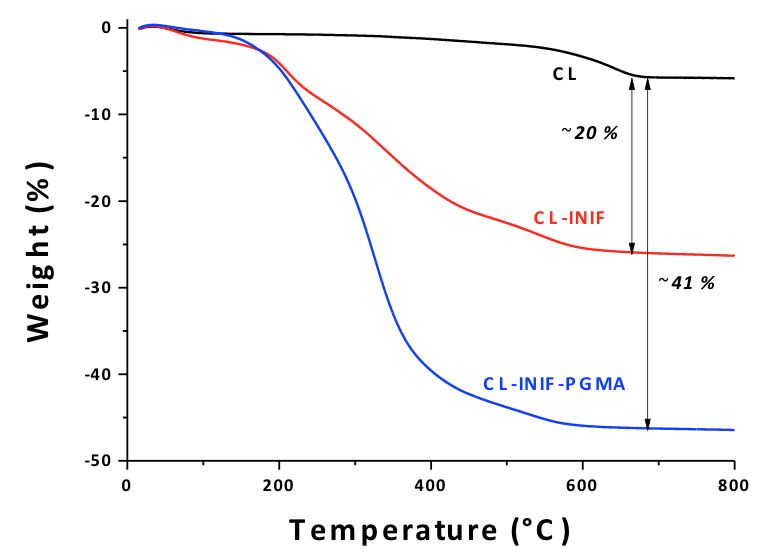Clay-polymer nanocomposites were prepared by living free radical photopolymerization initiated from a lamellar clay-anchored photoiniferter resulting from a cation exchange reaction of sodium by diethyldithiocarbamate benzyldiazonium tetra-fluoroborate salt (Figure 1).
 Figure 1 Sequential steps for the preparation of Cloisite-PGMA nanocomposites.
Figure 1 Sequential steps for the preparation of Cloisite-PGMA nanocomposites.
The success of the cation exchange process, followed by iniferter graft polymerization of glycidyl methacrylate (GMA) on clay nanoplatelets was confirmed by X-ray photoelectron spectroscopy (XPS) (see Figure 2), Fourier transform infrared spectroscopy (FTIR), X-ray diffraction spectroscopy (XRD), transmission electron microscopy (TEM) and thermogravimetric analysis (TGA). Thereby, original cation exchange method induced by diazonium salt produces intercalated nanocomposite materials with an important organic mass loading around 41wt% (Figure 3).
 Figure 2. XPS survey spectra of Cloisite, CL-INIF and CL-INIF-PGMA nanocomposite at a cation exchange capacity fraction of 9. Inset shows C1s region from clay-polymer nanocomposite that is identical to that of the pure polymer taken separately.
Figure 2. XPS survey spectra of Cloisite, CL-INIF and CL-INIF-PGMA nanocomposite at a cation exchange capacity fraction of 9. Inset shows C1s region from clay-polymer nanocomposite that is identical to that of the pure polymer taken separately.
 Figure 3. TGA thermograms of Cloisite, CL-INIF and CL-INIF-PGMA nanocomposite at a cation exchange capacity fraction of 9.
Figure 3. TGA thermograms of Cloisite, CL-INIF and CL-INIF-PGMA nanocomposite at a cation exchange capacity fraction of 9.
More importantly, the content of organic component included in the final nanocomposite material could be controlled by the diazonium salt concentration used during the synthesis. The final nanocomposites are soluble in chloroform and have potential as specialty, reactive fillers for epoxy resins employed in civil engineering.
Reference:
Salmi-Mani, H. ; Ait-Touchente, Z., Lamouri, A. ; Carbonnier, B. ; Caron, J.-F. ; Benzarti K. ; Chehimi, M. M. Diazonium salt-based photoiniferter as a new efficient pathway to clay-polymer nanocomposites, RCS Advances 2016, vol. 6 (91), Pages 88126-88134
